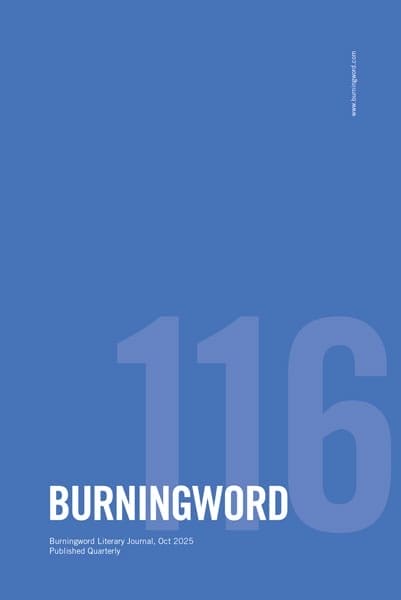October 2015 | back-issues, nonfiction
“The Marrow of Zen,” one of the sutras of Shunryu Suzuki’s book, Zen Mind, Beginner’s Mind, relates zen practitioners to four horses, with the fourth horse responding only after the pain of the whip penetrates to the marrow of its bones. If alcoholics need to hit rock bottom, I have some sense of what that means. I read Zen Mind, Beginner’s Mind thirty years ago, yet it took the onset of chronic neurological pain in order to commit to something I had only dabbled in for decades.
When looking out became impossible, and I could reflect but not imagine, I retreated within. At times, breathing was the only thing I could manage. What I found looking within was a life thrown out of balance, like a load having shifted in the back of a pick up with nothing securing it to the bed. Having seen myself for so long as a good guy, it was unsettling to realize how vain, shallow and self-indulgent I could be. Meditation became the ropes to re-anchor the load.
Who knew that pain could teach so much? Not me, but I now admit to being a slow learner. Someone might question whether I’m glad for the headaches. Make no mistake, I would like to be free of the symptoms that stifle me and keep me from enjoying all of my days. In fact, my search for a cure continues. Yet, looking back, I don’t think I would have otherwise learned things about my life and I’m glad to have found a teacher who speaks my language. Pain has finally penetrated so that I know in my bones what once I only thought in my mind.
by Charles Varani
Charles lives, writes and teaches in Oregon. He is also a shodan at Open Sky Aikido and rides his bicycle. Like most people in the Willamette Valley, he usually has something fermenting.
October 2015 | back-issues, poetry
The ticks I pick from your flesh
have the verve of John Donne’s flea
but much more adhesive
with the fervor of Lyme Disease.
The garden’s a death trap,
the primrose and forget-me-nots
funereal and dungeon-breathed.
Spreading composed mulch to conceal
the yawn of a hundred open graves
I tire of myself and slacken
almost enough to lie down
and allow the grubs to engage me
in their shy waxen petulance.
Meanwhile in pale innocence
you punctuate yourself with ticks
by kneeling to yank the weeds
eager to elbow out the flowers.
Something about our seasonal
bloodletting lingers. Sprains,
torn tendons, even broken wrists
spike the long dark winters. Blackflies
riot in spring, summer features
splinters from stacking firewood
to season before the cold arrives.
But the ticks linger all year long—
their hard metal bodies, springy
eight legs, driven by blood-thirst
ripe as a rage for celebrity.
Arachnids, not insects, they deploy
their motivation so adroitly
we feel them crawling through our sleep.
In the north, they gang up on moose
and kill with a quarter million
individual nibbles per pelt.
They stick to us both, but lately
you’ve been sporting them the way
ex-smokers sport nicotine patches
on parts of the body that matter.
I flush them into our septic tank
where they probably thrive and plot
a future so bloody no one
but ticks will survive, draining
the blush of sunset to leave
a fog-gray landscape writhing.
by William Doreski
October 2015 | back-issues, poetry
She believes the snow is a mirror
Turned upwards toward her face,
A catalyst for the frigid light
Burning in the old, dappled pines.
She believes that love
Is one or two canoes
Drifting in soft degrees
Over dark, polished waters.
She believes the young boy
Carrying his notebook beneath her shadow
Is a lost star following home
Her wintry beckons.
She believes we will one day remember
Her cold serious heartbeat,
Sending up bright untethered rockets
She pretends are prayers.
by Seth Jani
Seth Jani currently resides in Seattle, WA and is the founder of Seven CirclePress (www.sevencirclepress.com). His own work has appeared throughout the small press in such places as The Foundling Review, The Hamilton Stone Review, Hawai`i Pacific Review, Gingerbread House and Gravel. More about him and his work can be found at www.sethjani.com.


